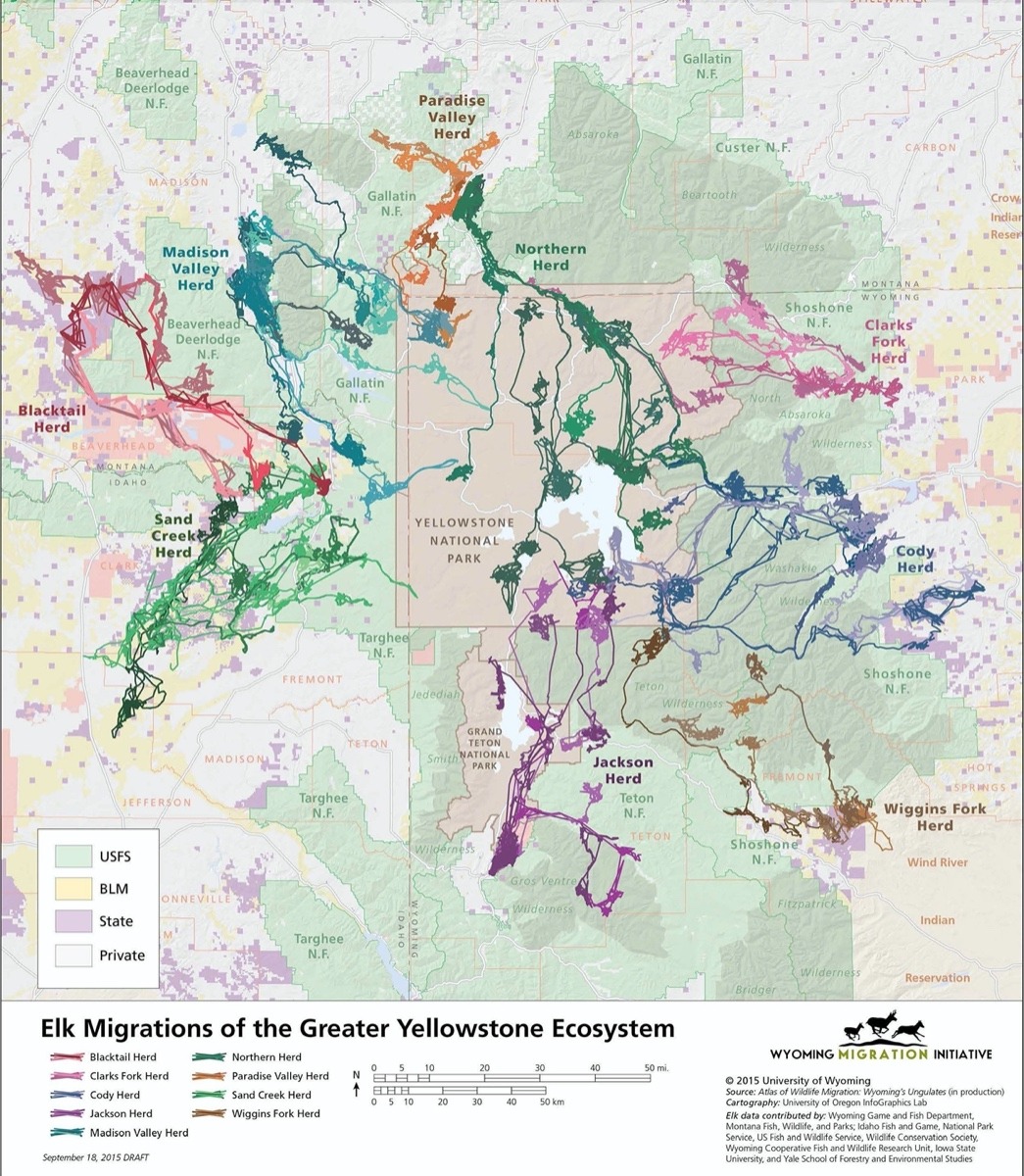Greater Yellowstone is renowned for its wildlife in part because the diversity of animal populations still present here have vanished from most other areas of the Lower 48 states. A question for outdoor-minded members of Generations Z through X is this: how can ancient wildlife migrations, like those for elk pictured in this map, persist with unprecedented expansion of the human development footprint happening along with rapidly rising levels of outdoor recreation in the public land backcountry?

